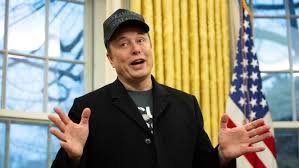Elon Musk’s Department of Government Efficiency (DOGE) recently made headlines for all the wrong reasons. The department, known for cutting costs and saving taxpayer money, announced that it had saved $8 billion by canceling a contract with the U.S. Immigration and Customs Enforcement (ICE). However, this claim turned out to be a massive mistake—the actual value of the contract was only $8 million.
This error, a 1,000x miscalculation, has raised serious concerns about the accuracy of DOGE’s reporting. Critics are questioning whether the department is truly saving billions or just inflating numbers to appear successful.
How Did This Happen?
DOGE was created to identify wasteful government spending and cut unnecessary costs. As part of its transparency efforts, it maintains a “Wall of Receipts”, a public list of cost-saving measures. The ICE contract cancellation was one of the biggest reported savings on the list.
However, after closer examination, investigative journalists discovered that DOGE had dramatically overstated the savings. Instead of $8 billion, the canceled contract was only worth $8 million. This revelation has led to widespread criticism, with many asking: If such a huge mistake slipped through, how reliable are DOGE’s other reported savings?
Musk’s High-Pressure Work Culture: A Factor in the Mistake?
One possible reason for this blunder is the extreme work environment inside DOGE. Reports suggest that Elon Musk has pushed his team to work up to 120 hours a week. Employees reportedly sleep in AI-powered sleep pods inside their office building, allowing them to rest quickly before getting back to work.
While this approach has led to rapid decision-making, it may also be leading to careless errors. Experts believe that the intense pressure to deliver results quickly could be causing employees to make hasty mistakes—like mistaking $8 million for $8 billion.
This is not the first time Elon Musk has been criticized for creating a workaholic culture. At Tesla and SpaceX, employees have described grueling schedules with little room for breaks. Now, it seems that DOGE employees may be facing the same burnout risks, which could be impacting their ability to do their jobs correctly.
Transparency Issues: What Else is DOGE Hiding?
While DOGE claims to have saved $55 billion in total through cost-cutting measures, experts are questioning the accuracy of these numbers.
Many of DOGE’s savings reports lack detailed explanations. Some numbers are simply labeled as “fraud detection savings,” without any clear evidence of how the money was saved. This lack of transparency is making it difficult for the public to trust the department’s claims.
Additionally, Musk’s team has been quickly updating or removing numbers from the Wall of Receipts when mistakes are found. Over the last 48 hours, DOGE quietly reduced its reported savings by $9 billion, leading many to believe that the $8 billion ICE mistake was just the tip of the iceberg.
The government and taxpayers now face a big question: How many more numbers have been exaggerated or miscalculated?

Reactions from Experts and the Public
The discovery of the $8 billion mistake has sparked outrage across the country. Many are questioning whether DOGE is truly effective or if it’s just another flashy Musk experiment gone wrong.
Political Leaders Weigh In
Government officials have expressed serious concerns about DOGE’s credibility. One senior official stated:
“If a department dedicated to efficiency can’t even calculate its own savings correctly, how can we trust anything they report?”
Some lawmakers are now calling for an independent audit of DOGE’s reported savings to verify how much money has actually been saved.
The Internet Reacts
Social media users were quick to mock the mistake, with many joking about the “Elon Musk Math” that turned millions into billions. Memes comparing DOGE to fictional cost-cutting disasters quickly went viral.
Some users also pointed out the irony of a government efficiency department making such an inefficient mistake. Others questioned whether Elon Musk hands-on leadership style might be doing more harm than good.
What’s Next for DOGE?
Musk has acknowledged the mistake but has downplayed its significance, saying that errors happen and can be corrected. He remains committed to cutting wasteful government spending and claims that DOGE is still on track to save taxpayers billions.
However, after this mistake, DOGE will need to take serious steps to restore public trust. Some possible next steps include:
- Hiring independent auditors to verify cost-saving reports.
- Slowing down the pace of work to reduce human errors.
- Providing more detailed breakdowns of reported savings.
For now, it’s clear that while Musk’s ambition for efficiency is strong, the execution has been far from perfect.
Final Thoughts: A Lesson in Accountability
The $8 billion blunder is more than just a math mistake—it’s a wake-up call for how government efficiency should be handled. Cutting costs is important, but accuracy and transparency are just as crucial.
If DOGE truly wants to save taxpayer money, it needs to focus on real, verifiable savings rather than exaggerated numbers. Otherwise, its mission to improve government efficiency may end up doing the exact opposite.
Read also – Super Bowl Ad Rankings: Bentley University Reveals the Best and Worst of 2025!
One thing is certain: the public will be watching closely to see what happens next. Will DOGE recover from this embarrassing mistake, or will it become another failed Musk experiment? Only time will tell.






